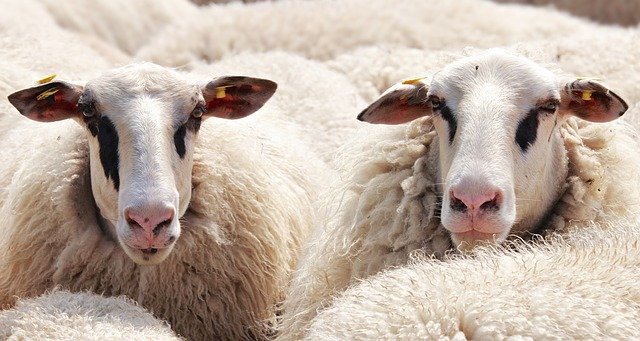With the onslaught of cold weather and the first major snowstorm having already slammed the northeast, I’m thankful to be a Virginian! I’m also thankful for warm clothing for when the temperature plunges here as it did in mid-November.
Many synthetic materials have been developed for use as clothing insulation. Thinsulate is one of the most notable and was developed by the 3M Company. It is available in different weights for various temperatures and is incorporated into gloves, boots, hats, coats and more. I’ve used this product for years and am grateful for the warmth it provides in my tree stand!
Other manmade insulators include Thermore, FullRange, PrimaLoft, and others. Each of these endeavors to trap and hold heat generated by the human body to provide extended comfort and warmth. In addition, some manufacturers now offer battery heated clothing as well.

Our Creator, however, was way ahead of modern researchers when He developed natural fibers at the time of creation. The hair of many animals actually is still one of the best insulators and offers the most versatility. Even atheists must admit how convenient it is that all of these “naturally occurring” fibers provide such great insulation and are readily available for human use.
Take wool for example. Before traveling to Colorado, I was advised to purchase some wool clothing. I have used wool shirts and socks for years but I added some of both along with some woolen undergarments as well. I was not disappointed and quite thankful for the warmth they provided on those mornings when the thermometer dipped into the teens.
Wool is produced by sheep which are some of the oldest domesticated animals on earth. It is used in both cold and hot climates because of its ability to trap and hold air, thus preserving the temperature of whatever or whoever is wearing it. It is incredibly lightweight and most of it comes in white allowing us to easily dye it to suit our own preferences.
In addition, wool is both porous and permeable. These two qualities enable it to absorb perspiration and then release it through evaporation. Wool wicks the moisture away from the body preventing chilling in cold temperatures and helps the body to feel cool in hot ones. Wool further warms its wearer by giving off 27 calories of heat per gram as it gets wet. Because it is so absorbent, wool can take in thirty percent of its own weight in water without feeling moist while manmade polyester is at a mere five percent.
One other advantage of wool is its abundance. God has designed sheep’s hair to grow at such an accelerated rate that it can be shorn annually without affecting the animal. After shearing, it can be bundled and stored for long periods as well as spun into yarn for clothing, blankets, tents, and etc. Because sheep can thrive in a variety of climates and survive off of subsistence vegetation, wool is available the world over. Wool is so abundant that there is normally a glut of it and its price is artificially protected by various countries through subsidies, tariffs, and government programs.
Other animals such as beavers, foxes, mink, and bobcats also produce fur that provides incredible warmth and the Native Americans took full advantage of these. Even opossums and skunks grow pelts that have been and are being used for their insulating properties.
Down is another natural fiber known for its ability to trap and hold heat and has been used by humans to insulate clothing for thousands of years. These specialized feathers from geese and ducks keep these birds toasty warm even when swimming in frigid waters. I’m thankful to have a down vest and have sweated in it even on very cold days!
God is a great Creator and the original inventor of insulation. His creations are constantly being examined and mimicked by engineers and designers to make our lives better. In some cases, however, there’s just no substitute for the wool, fur, and down He’s already made. We would be wise to recognize His ingenuity and wisdom and praise Him for it.
Enjoying His creations, George